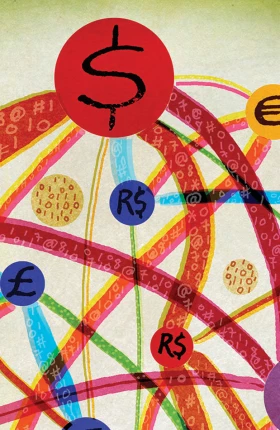Although the global financial crisis had a fundamental impact on the banking industry, the macroeconomic “noise” it generated helped conceal some fundamental forces that are still reshaping business models in corporate banking.
BCG has identified five of the most important dynamics: tighter regulation, shifting client needs, the digital revolution, disintermediation, and globalization.
Global Corporate Banking 2015
- The Look of a Winner
- Five Trends Disrupting the Corporate Banking Landscape
- What the Winning Corporate Bank Will Look Like in 2020
Tighter Regulation. Corporate bankers have been working steadily on compliance with Basel III and other new waves of regulation, including anti-money-laundering and anti-terrorist-financing measures. We are also seeing “know your client” initiatives, sanctions monitoring, and, in some countries, new requirements concerning business conduct and fair treatment of clients.
In the long run, new regulations may affect the corporate banking business even more than anticipated. While crisis-era margin increases are eroding, additional compliance costs are large and here to stay. Basel III capital and liquidity mandates are fundamentally changing the economics of some core corporate banking products and customer segments. Our recent case work has revealed how regulatory costs are undermining previously attractive businesses, such as the following:
- Core corporate lending products such as medium- and long-term loans (as well as construction loans), which are major burdens on funding resources
- Public-sector banking in many countries, which is heavily affected by liquidity and funding measures
- Risk management products offered by Tier 2 banks, which have been hit hard by new risk-weighted asset, liquidity, and capital requirements as well as by rising operating costs
BCG believes that the industry has only partly adjusted to the new regulatory landscape. Indeed, few banks have figured out how to optimally manage new regulatory cost pressures. And only a few players have matched industry leaders in their ability to select clients and manage portfolios in an analytically robust way through the multiple lenses of risk, capital, funding, and liquidity.
Shifting Client Needs. Corporate bankers have often invested less time in fundamental customer research than have their colleagues in retail banking. This trend is changing, however, as corporate clients increasingly demand solutions for specific needs. Examples include the following:
- Customized Advice. BCG’s interviews with corporate clients show that these companies are increasingly looking for highly customized advice from their bankers as well as support in navigating through complex financial challenges, rather than simply seeking an institution from which to buy standard products.
- End-to-End Solutions. Corporate clients increasingly want solutions that help them run their businesses more efficiently, more effectively, and with lower risk. Financial supply-chain platforms such as Bolero and GT Nexus offer an integrated approach to managing purchase orders, transportation documents, invoices, payments, and working-capital financing.
- Industry-Specific Solutions. While some large corporate clients have enjoyed industry-specialized solutions for years, midmarket and even smaller clients are looking for products that suit their industry’s payment cycles, balance-sheet structures, and risk profiles. The CFO of one U.S. health care company described how its bank’s treasury-management offering—designed specifically for the health care industry—allowed the company to identify low-value activities, which in turn enabled the CFO to cut costs and reduce errors. The bank also developed a mobile-payments application that allowed the company to collect patient copayments more efficiently.
- Faster and Simpler Solutions. Corporate customers have usually invested internally in simplifying their own business processes—and they expect their banks to keep up. One U.S. corporate bank invested heavily in detailed end-user research to make sure its payments and cash-management workflow solutions made life simpler and easier for clients. This initiative has allowed the bank to attract and retain new clients and to generate valuable fee revenues.
The Digital Revolution. While some corporate banks have established leading positions in digital technology, many others have underinvested. And customers have taken notice, especially because they have been digitally transforming their own businesses and using the latest Web services in their personal lives. Client preferences about interacting with their corporate banks are changing rapidly, with fast-growing expectations of fully integrated solutions, lean processes, and 24/7 access via the Web and mobile devices. Clients are also expecting more than just the digitization of traditional corporate banking products. They want new, value-adding solutions. In a recent BCG survey of corporate clients, more than 70 percent indicated that digital capabilities were an important factor in assessing a corporate bank.
Meanwhile, other players have noticed the digital opportunity in corporate banking. Venture capitalists, large Internet companies, and others are backing a rapidly growing set of startups that can compete with corporate banks. Examples include payments and financial-supply-chain solutions (Square; Tungsten), financing (Google-backed OnDeck Capital; Amazon), and foreign exchange (OzForex).
Big data is also a key element of the digital revolution in corporate banking because many players gather vast troves of client data—especially via payments systems—yet often fail to leverage it. Our project work shows that bank relationship managers (RMs) can be much more productive if wallet-sizing analytical engines are used to identify the next product that will most likely be needed by each client in an RM’s portfolio, on the basis of the behavior of similar companies. In addition, there are opportunities to share value-adding big-data analysis from bank datasets such as benchmarks on supplier or customer payment behavior. Predictive risk models driven by cash management data can identify new, low-risk lending opportunities that allow RMs to engage the client with proactive offers of tailored financing—and at the same time reduce the bank’s credit losses and administrative costs.
Disintermediation. Not only is the digital wave spawning new rivals that are positioning themselves between traditional corporate banks and their clients, but other competitors such as shadow banks and debt-capital-markets providers are also cutting incumbent corporate banks out of the picture by connecting borrowers directly with other sources of finance. A BCG study on shadow banking suggested that roughly 25 percent of U.S. middle market lending is now being provided by various shadow banking players.
Globalization. Despite being on trend lists for many years, globalization continues to drive major changes in corporate banking. More midmarket companies are becoming active in international supply chains, and their corporate banking needs are evolving in step. New trade corridors are emerging (such as from Brazil to China) that are not aligned with the networks of traditional corporate banks. Emerging challengers in industries from aerospace to agribusiness are stepping out of their home markets to become the next generation of multinationals. Except for a few emerging challengers of its own, the banking industry seems to be going in the opposite direction. Under pressure from regulators and also in response to crisis-era losses, many banks are retrenching with regard to their international business footprints. Since their clients are at the same time becoming more active outside their own home markets, there is a new risk that clients will forge relationships with other providers that can serve their international needs.
We believe that the disruptive trends described here could badly damage corporate banks that do not adapt, while creating opportunities for those that do. (See “Ignoring Current Trends Can Be Risky.”) These trends are already driving the growing divergence between top and bottom players.
IGNORING CURRENT TRENDS CAN BE RISKY
In order to estimate the effects of action versus inaction with regard to current market dynamics, we looked at typical performance metrics from our European benchmarking analysis and did some hypothetical scenario analysis. Let’s assume that Bank A and Bank B are identical at the beginning of the scenario. But Bank A does not believe that current trends call for major action, while Bank B does. How would the banks’ performance differ if just two or three disruptive factors affected them over the next several years? Let’s choose three trends:
- Tighter Regulation. By not actively steering its sales force and clients into capital- and liquidity-light products, Bank A could end up with a higher mix of capital- and liquidity-heavy clients, leading to lower overall profitability than its peers.
- Shifting Client Needs. By not investing in client-friendly solutions, Bank A’s win rate on competitive proposals for quality clients could slowly begin to decline.
- The Digital Revolution. By offering a mediocre digital-payments and cash-management platform, Bank A could end up slowly losing sophisticated (and deposit- and fee-generating) clients to competitors.
Suppose that Bank B gains 0.5 clients per RM per year and increases the cross-selling of nonlending products from all clients by 2 percent per year, while Bank A’s business erodes to an equal degree. After three years, the difference in pretax return on regulatory capital would widen to 4 percentage points. In other scenarios, including more aggressive, digitally enabled cost-cutting by Bank B, or improved risk management due to big-data predictive risk management, the gap would be even wider. A key point is that the impact on Bank A in these scenarios is not one of sudden catastrophe. Instead, the bank would likely witness a slow erosion of its franchise and suffer sustained lower growth and profitability than its competitors. Over the medium term, through 2020, Bank A would see a dramatic impact on its position in the market and on its economic profit potential.





